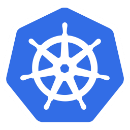Kubernetes: tracing requests with AWS X-Ray, and Grafana data source
2 March 2024Tracing allows you to track requests between components, that is, for example, when using AWS and Kubernetes we can trace the entire path of a request from AWS Load Balancer to Kubernetes Pod and to DynamoDB or RDS. This helps us both to track performance issues – where and which requests are taking a long… Read More »






